Our visit with Wahu and his friends primed us for the next stop on our tour of Northern Namibia, and we were excited to see the animals that roamed Etosha National Park. Our itinerary gave us two days and nights in Etosha: we would arrive around noon on the first day and set up camp at Namutoni Camp before setting out an afternoon game drive, and our second day would begin with a morning game drive, a brief respite for lunch at Halali Camp, and then a drive to Okaukuejo Camp, where we could visit the watering hole around which the camp was set after dark. Our guides suggested that, if we were lucky, we might see a black rhino during the evening at the floodlit Okaukuejo watering hole.
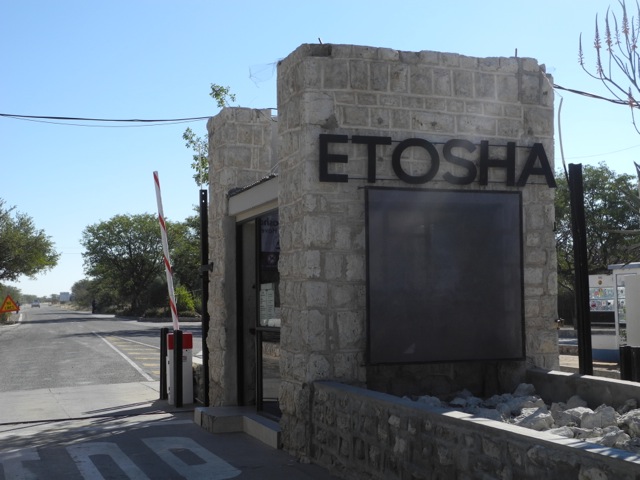
Luck seemed with us from the moment we set foot in Etosha. In addition to the usual suspects (e.g., springboks), we spotted banded mongooses [mongeese?], endangered black-faced impalas, giraffes, wildebeests, and a variety of exotic birds like lilac-breasted rollers, flamingoes, and kori bustards, the male of the species ranks among the world’s largest flighted animals.
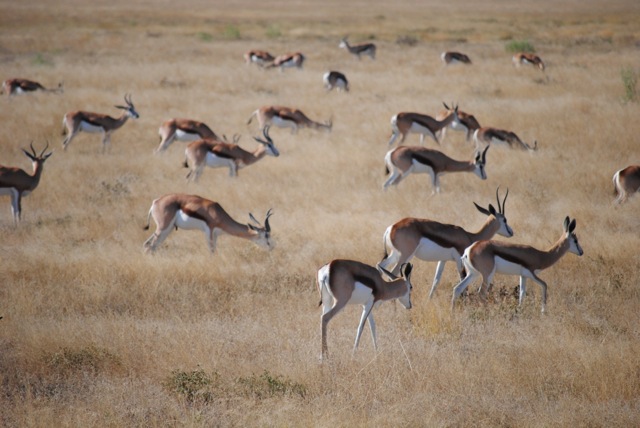
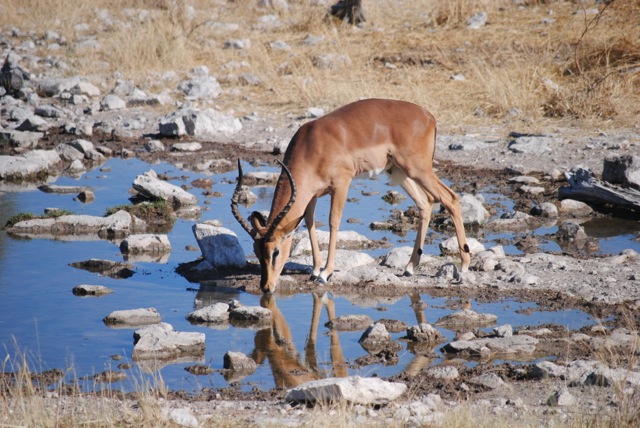
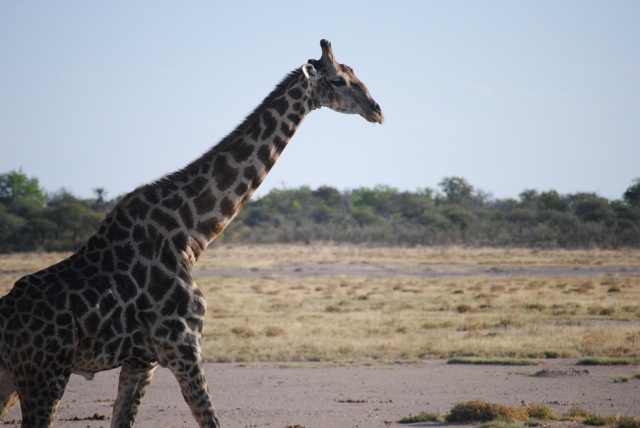
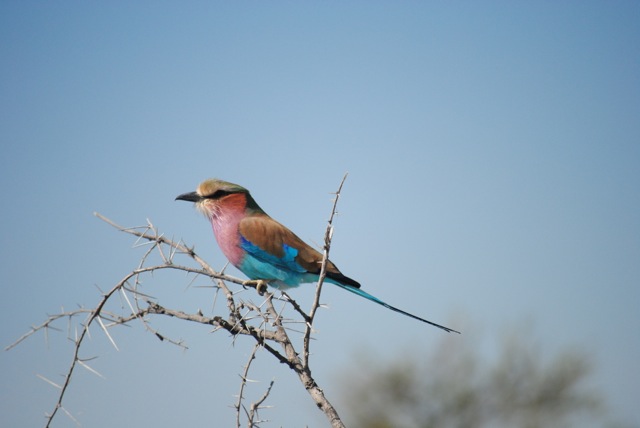
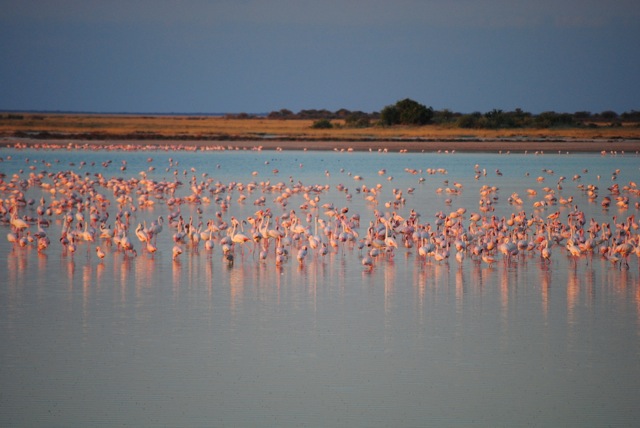
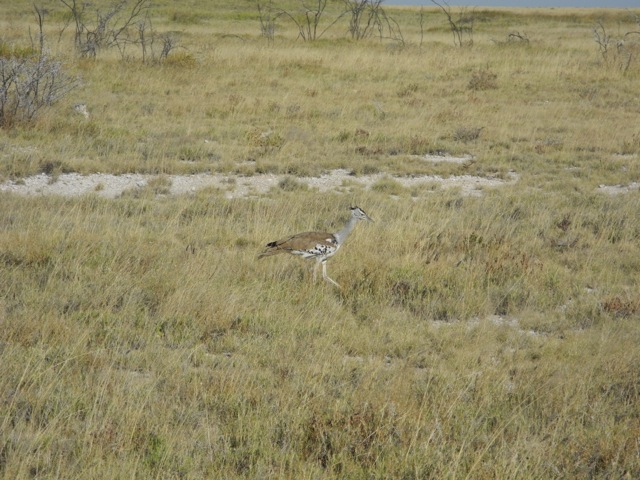
Our visit coincided with Etosha’s dry season, which is rumored to be one of the best times of year for wildlife viewing, as the animals during this period tend to congregate around the parks various watering holes. Nonetheless, I was deeply skeptical when our guide piloted us toward a watering hole at the beginning of our first game drive – not only because it appeared to be a man-made watering hole, but also because the watering holes we had visited in both Kruger National Park and Hluhluwe-Imfolozi Park had been universally deserted. But, lo and behold, there was a solitary bull elephant enjoying a cool drink at this first waterhole. In awe, we marveled at his size and proximity to us.
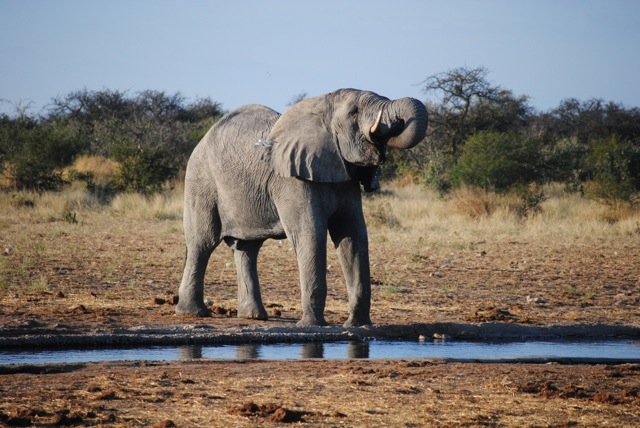
A second bull emerged from the trees behind the watering hole and began to approach the area. The first elephant erupted in a fearsome bellow and took a few quick steps. Still jumpy from our encounter with a bull elephant in Kruger, I worried that this elephant was preparing to charge us, but our guide explained that he had merely been startled by the presence of the second elephant, which had snuck up on him.
Soon, the two bulls were joined by a large cluster of additional elephants: a couple of elderly males, a handful of young elephants that our guide estimated to be between two and three years old, and a baby elephant less than one year old. While these new elephants drank, the bulls paraded the length of the watering hole between the other elephants and us, keeping one watchful eye fixed on our bus.
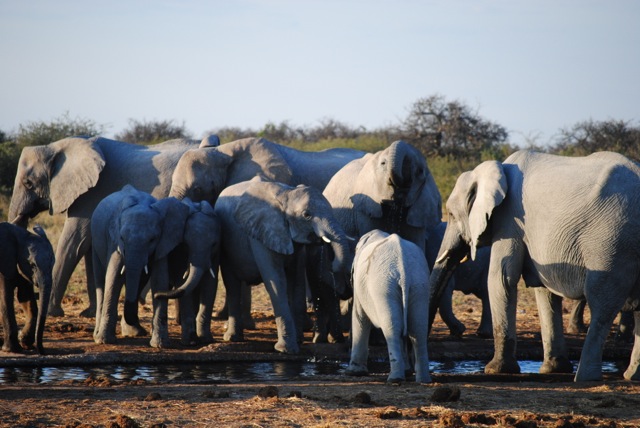
At one point, the baby elephant fell headlong into the watering hole. I remembered a story a fellow traveler had told me about a baby elephant nearly drowning in a hotel swimming pool, and I worried about the baby’s safety. There was a great amount of splashing while the older elephants tried to fish the baby out of the watering hole, and, finally, they succeeded.
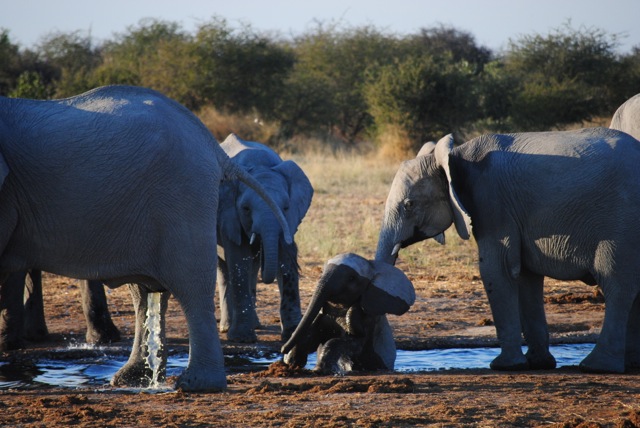
On the second day, our luck held, and we spotted many of the same animals as the day before, with the addition of oryxes, hartebeests, kudus, ostriches, a single white rhino, a tower of at least nine giraffes, and a family of zebras, including their young.
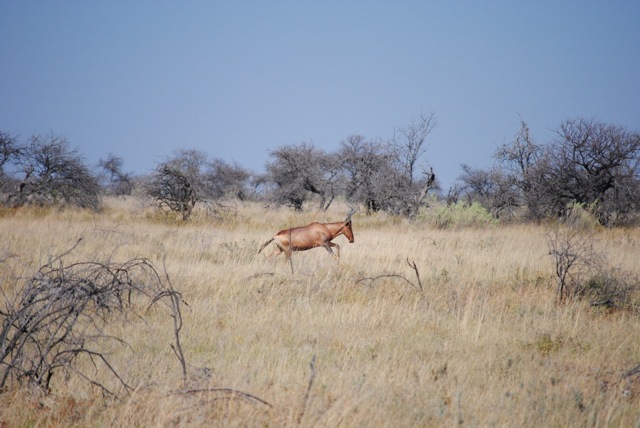
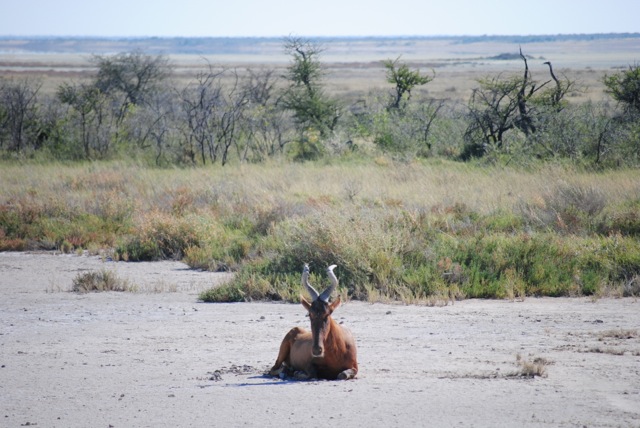
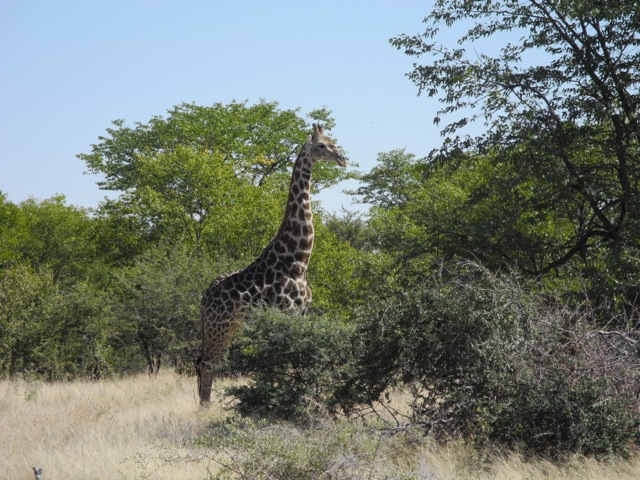
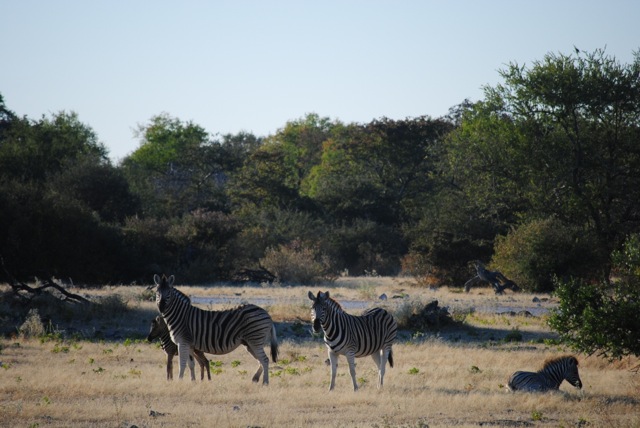
The unquestionable highlights of our game drive were lions. Lion sightings are high on any safari-goer’s wishlist, but lions are notoriously difficult to spot. On our morning game drive, as we neared a watering hole that looked abandoned, one of our guides suddenly called out and pointed. There, beneath a tree not far from the watering hole, were two adult female lions and three adorable lion cubs. We sat there for at least half an hour, watching the cubs play, pouncing on one another and leaping about.
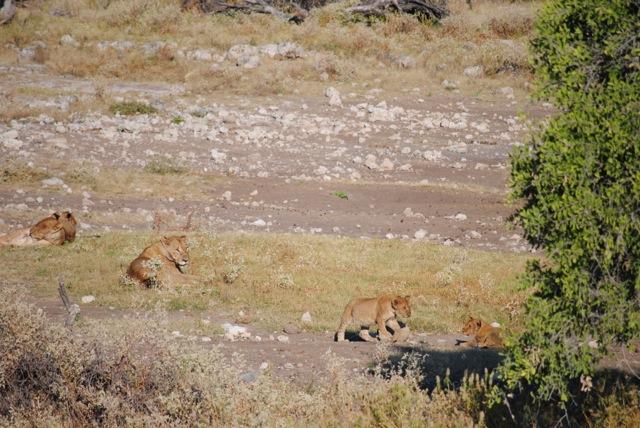
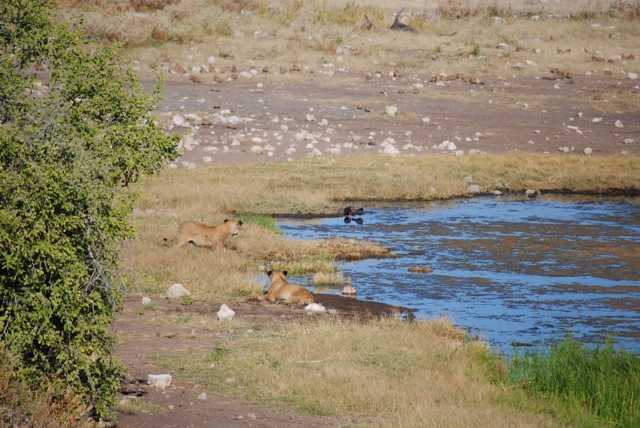
As if that first lion sighting wasn’t enough, on our way to Okaukuejo Camp in the late afternoon, we saw even more lions. One adult female led her cubs across the road and directly in front of our vehicle, where they paused to drink in a watering hole before ambling off into the distance.
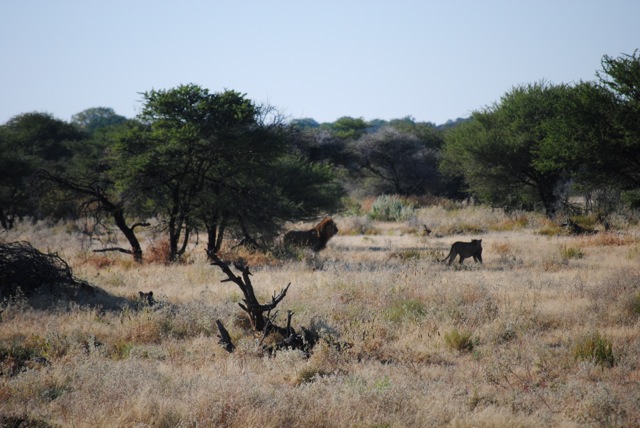
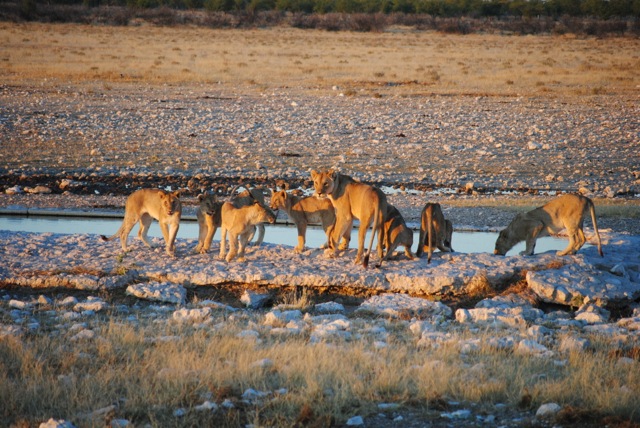
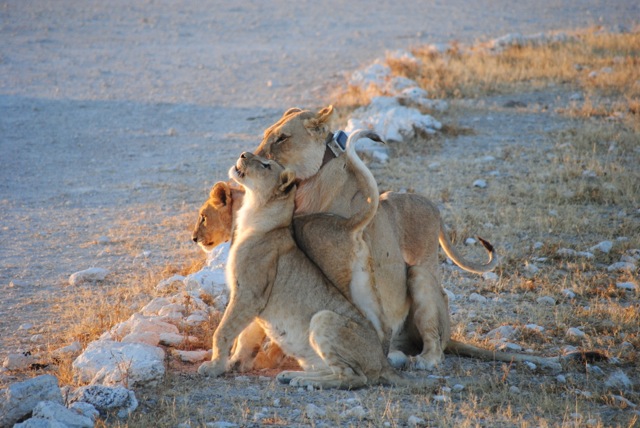
If the lions were the highlight of the game drive, the lowlight (at least for me) was the jackals feasting on a disembodied zebra leg.1 It was very circle-of-life, but nonetheless gruesome. I’m not going to ruin your lunch with the pictures.
In the evening, we visited the Okaukuejo watering hole of which our guide had teased the possibility of a black rhino sighting. On our visit before dinner, we found the place filthy with elephants. At one point, we counted eight elephants drinking at the same time. It was amazing watching these giant beasts lumber out of the growing darkness into the floodlit waterhole and then, just as silently, slink back off into the nighttime abyss.
The elephants were majestic, but they weren’t black rhinos. Since our first game park, we had been tracking the black rhino, hoping for a sighting of the elusive beast.2 We returned to the watering hole after dinner, armed with a bottle of wine and bug spray, determined to wait it out until one of the black rhinos appeared.
Once we had been there for maybe thirty minutes, a black rhino finally made his appearance. He ambled in from the side, walked around in front of us, and drank peacefully until an elephant, much larger than himself, appeared and chased him away. Because it was night and the watering hole was lit with a floodlight, our pictures of the black rhino are unimpressive, making him look like an amorphous red blob – but we know what it is. We know that we finally saw the black rhino, and that’s all that matters.
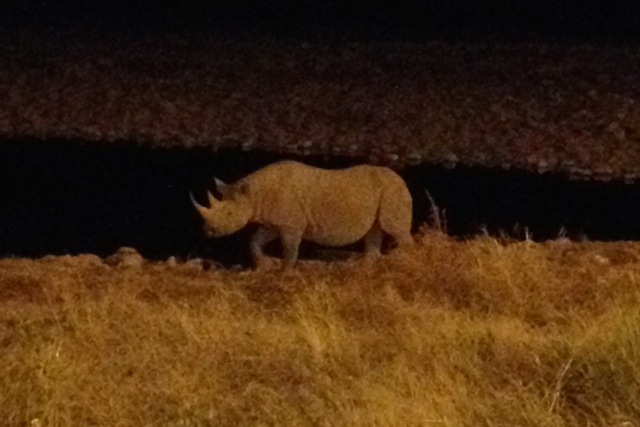
The following morning, while our guides filled up the truck at the gas station on our way out of the park, they told us we could climb a nearby tower to see the campsite and surrounding park from above. From that vantage point, we spotted what must have been hundreds of zebras descending on the Okaukuejo watering hole. We raced back to the watering hole on foot, gaped open-mouthed as we watched waves of zebras splashing in and out of the watering hole. Our guides had to come physically tear us away to keep us on schedule for the day’s itinerary; it was an unbelievable sight to end our amazing trip to Etosha National Park.
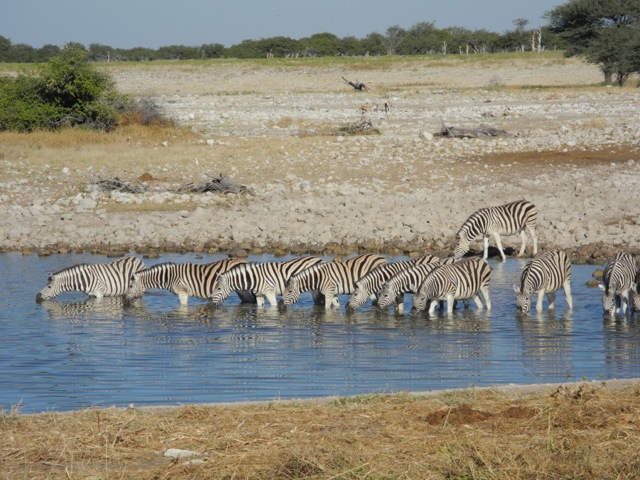
1 Marc, however, enjoyed this. (Sicko.)
2 We had been particularly fortunate in spying scores of white rhinos at Hluhluwe-Imfolozi Park, but this just furthered our quest to locate black rhinos, their smaller, more aggressive cousins with pointed snouts.
Where We Stayed:
☆ Namutoni Camp. Four goats. The location of the camp inside an old German fort was neat, but I was frustrated by the presence of the wifi for which no one would divulge the password. (It was my mom’s birthday, and I wanted to give her a call!)
☆ Okaukuejo Camp. Four goats. The gravel ground didn’t make for a very comfortable night’s sleep and the presence of a rowdy bunch of overlanders disturbed us, but the watering hole was amazing. I’m awarding one goat for the black rhino alone!

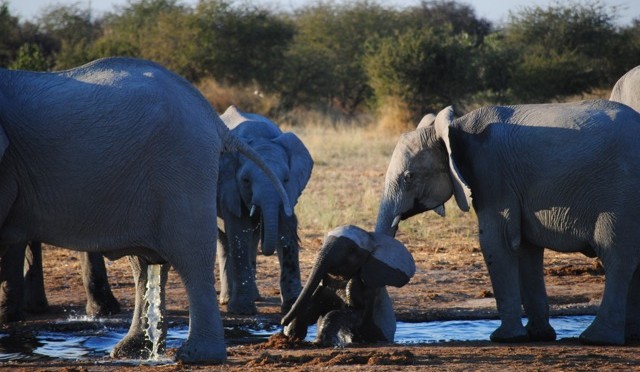

Fabulous, fabulous photos! Sure hope my luck is as good as yours and Marc’s.
We hope so too! You’ll love Namibia.